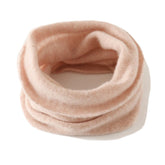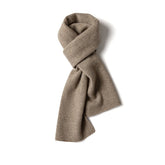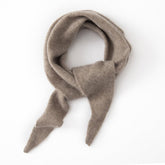What is Considered Plus Size?
Plus size clothing is made for people with a bigger body shape. In the U.S., it usually starts at size 14, and in the UK, at size 16. These clothes are designed to fit well and look good on different body types.
As the fashion industry evolves, brands like Slipintosoft, with our range of plus size silk wear, are increasingly recognizing the importance of inclusivity, providing stylish options for plus size women, and promoting body diversity. In this article, we dive into what weight is considered plus size, what a plus size range is, and more!
What is Plus Size?
Plus size refers to clothing designed for individuals whose body measurements exceed standard sizing charts. In the U.S., plus size clothing typically starts at size 14, which corresponds to a waist measurement of around 34 inches (86 cm). Standard or "straight" sizes usually range from 0 to 12, meaning plus size fashion caters to those who fall outside this narrower scope.
Plus size clothing is available for both women and men, with men's versions often labeled as "big and tall" to accommodate broader frames and longer proportions. More than just a sizing category, plus size fashion represents the growing recognition of body diversity. Many brands now embrace a wider range of shapes and sizes, offering stylish and well-fitting options for all individuals.
What is Considered Plus Size?


When discussing what is considered plus size, it's essential to understand the specific sizes that fall within this category. In general, plus sizes start at size 14 for women, which corresponds to a bust measurement of around 40 inches, a curvy waist of 34 inches, and hips measuring approximately 44 inches. However, this can vary a lot between brands; some may consider size 12 as part of their plus size range.
For many brands, including those focused on women's clothing, the following sizes are commonly recognized as part of the plus size category:
- Size 14: Starting point for many brands
- Size 16: Widely accepted as part of the plus size spectrum
- Size 18: Often included in mainstream plus size offerings
- Sizes 1X to 6X: Extended sizes catering to curvier body types
- Extended sizes as high as 7X: Available from select retailers focusing on inclusivity
Understanding these distinctions helps consumers navigate their choices more effectively when shopping for stylish plus size garments.
Comparing Traditional Sizes Across the World
The definition of what constitutes a plus size can vary significantly across different countries. This inconsistency can create confusion for consumers trying to find the correct fit. Below is a comparison table illustrating how conventional plus clothing sizes can vary across countries:
|
USA |
UK |
Europe |
|
14 |
16 |
44 |
|
16 |
18 |
46 |
|
18 |
20 |
48 |
|
20 |
22 |
50 |
|
22 |
24 |
52 |
|
24 |
26 |
54 |
|
26 |
28 |
56 |
|
28 |
30 |
58 |
Understanding these differences is essential for consumers who may be shopping internationally or looking for specific styles that fit their body type. The fashion industry has made strides toward inclusivity. However, these variations highlight the need for standardized size charts that can help shoppers find clothing that fits well regardless of where they are shopping.
The History of Plus Size

The history of plus size fashion reflects broader societal changes regarding body image and acceptance. Initially, the term “plus size” came about in the early 20th century as a marketing strategy aimed at women who did not fit into standard sizing categories. It was not until the late 20th century that the fashion industry began to take notice of this demographic's needs more seriously.
In recent years, there has been a major shift toward inclusivity in fashion. The rise of body positivity movements has encouraged brands to expand their offerings beyond traditional sizing. Today, many fashion brands are embracing larger sizes and promoting diverse representations through campaigns featuring plus size models. This evolution not only empowers individuals who consider themselves plus size but also challenges outdated notions about beauty standards within society.
Limited Choices for Plus Size Clothing
Despite progress in the fashion industry regarding inclusivity, many consumers still face limited choices when it comes to plus size clothing. Historically, options have primarily been restricted to basic garments, lacking style and variety. While some brands have begun to expand their collections to include trendy pieces for curvy figures, many retailers still offer a limited selection compared to straight sizes.
The frustration among plus size women often stems from the perception that they must settle for less fashionable options or compromise on fit. This lack of variety can lead to feelings of exclusion within the fashion world. However, as consumer demand grows for stylish plus size options, more brands are stepping up to fill this gap by offering diverse collections that cater specifically to various body shapes and preferences.
Slipintosoft: Silk for All Sizes
Understanding what is considered plus size involves recognizing both specific sizing standards and the broader implications within the fashion industry. As brands like Slipintosoft continue to push for inclusivity by providing stylish silk options for all body types, it becomes increasingly clear that fashion should be accessible to everyone — regardless of their size or shape. We want to make that happen.
If you are looking for luxurious comfort combined with elegance, Slipintosoft offers silk garments designed for all sizes, ensuring that everyone, both women and men, can enjoy high-quality fashion without compromise. By prioritizing inclusivity in design and marketing strategies, we can create a more welcoming environment within the fashion world — one where everyone feels empowered to express their unique style confidently.
FAQs about Plus Size Clothes
Is a size 12 considered a plus size?
In most brands, a size 12 is often considered plus size for women, but this can vary by retailer. Some start plus sizes at a US size 10, while others begin at 14W. It’s also important to note that perceptions of what constitutes plus size can differ regionally and across fashion industries.
What size is considered a plus size model?
Plus size models typically wear a size 12 or larger, though the starting point for plus sizes in modeling is often size 10. This large size range helps represent plus size women's fashion. These models frequently aim to reflect the diversity of body shapes among women who wear plus size clothing. Notably, the definition of a plus size model may differ depending on the agency or market focus, including runway, catalog, or commercial modeling.
Is size 8 considered plus size?
Size 8 is not generally considered plus size for women, as it’s closer to a standard or size 6 in most brand's charts, aligning with average sizing in the broader fashion industry. Plus sizes are sizes 14W and up, so size 8 is usually below that range. Size 8 is commonly marketed as a “medium” or “large” depending on the brand’s sizing scale.
How does plus size clothing work?
Plus size clothing typically covers sizes 1X to 6X, and an extended size of 7X to meet diverse body shapes. This range allows U.S. brands to cater to those who wear a size 20 or beyond. Plus size clothing is often designed with different proportions, cuts, and fabrics to accommodate and curvier body shapes. Many brands also include additional features, such as elastic waistbands and stretch materials, to enhance comfort and fit for consumers.
Back to top: What is Considered Plus Size?










